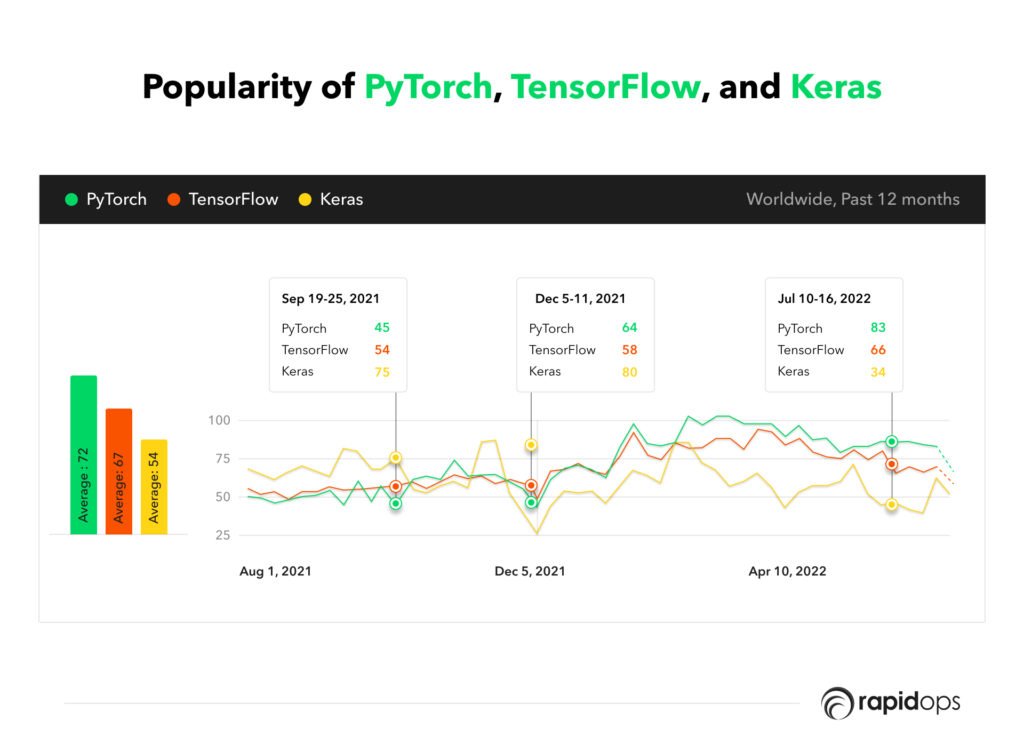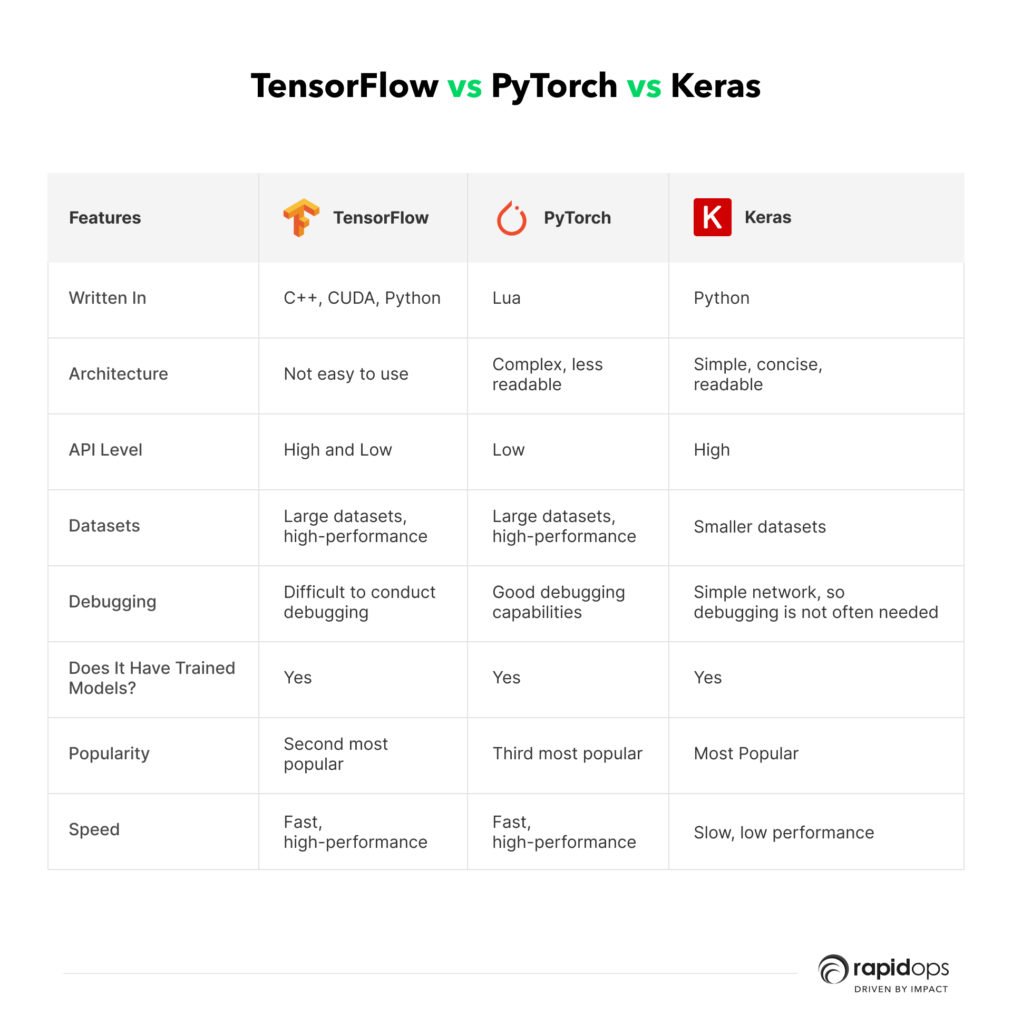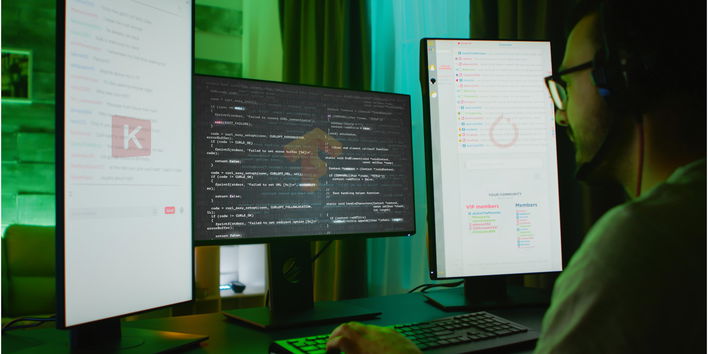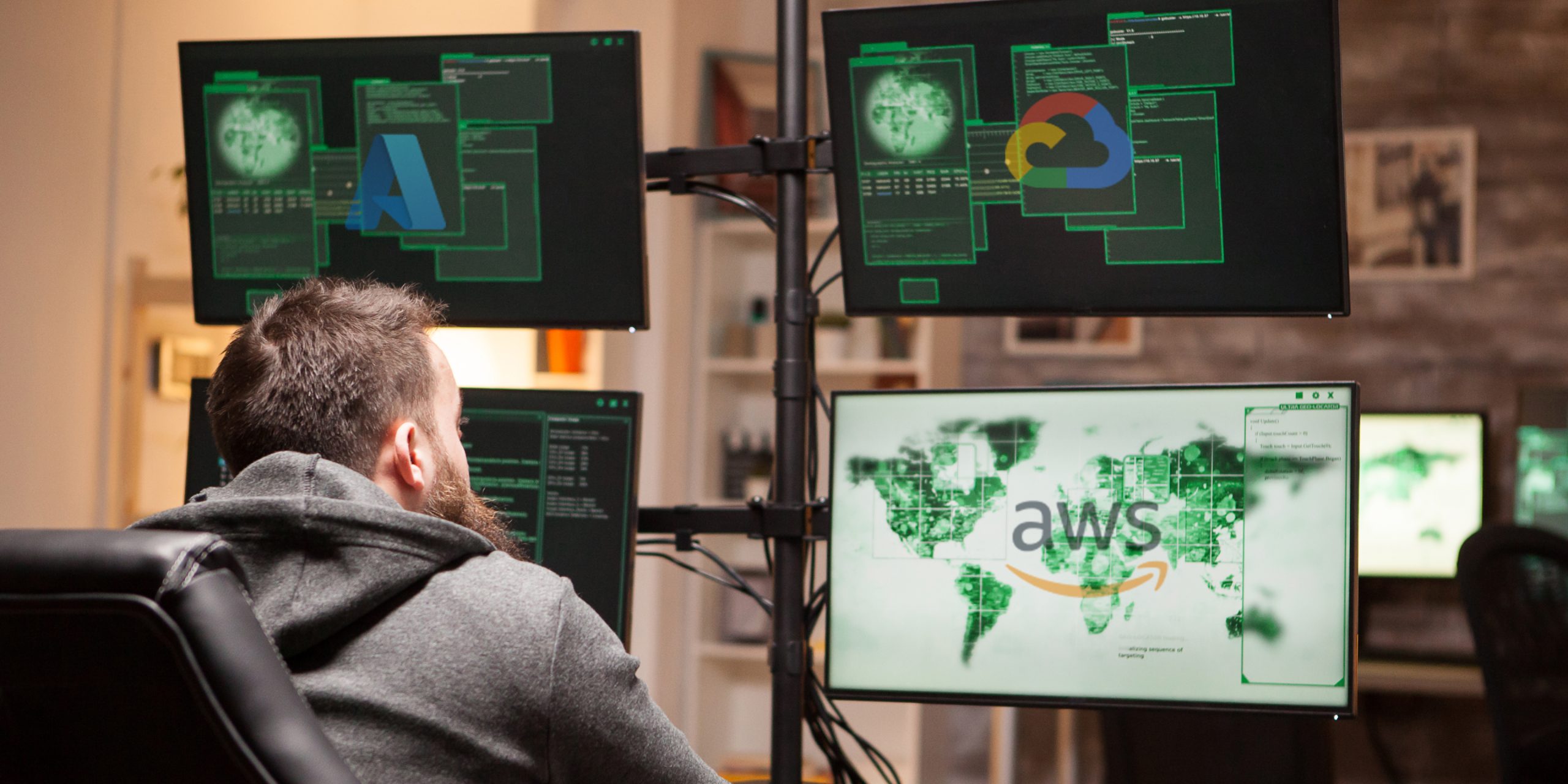- Engineering
- 4 min read
- July 2022
TensorFlow vs PyTorch vs Keras: Top Key Differences
TensorFlow vs Pytorch vs Keras might sound foreign to you now, but these frameworks are the future for all of us!
Based on the architecture and features, all three frameworks are different from one another. Although, depending on your requirement, if you select the right one, it can become a deal maker.
Over the last few years, the popularity of AI frameworks is increasing. Here's the representation that depicts the trend of TensorFlow vs PyTorch vs Keras over the past 12 months:

Here’s an elaboration of TensorFlow vs. PyTorch vs. Keras, along with their individual capacities and features that might lead you to finalize one framework for your business right away!
1. TensorFlow
Launched in 2015, TensorFlow is one of the best-known deep learning frameworks widely used by data science professionals.
Currently, the stable version of TensorFlow is made open-source and is available under Apache License 2.0.
Since it was made open-source (Sept 2019), they claimed to have downloads of 76,000,000 by people and reportedly have 2400 people contributing to the community.
Features of TensorFlow
- The framework uses tensors to perform operations and manipulations in a neural network. A tensor is a multidimensional data array that flows through the neural net layers.
- TensorFlow enables developers to focus on high-level logic techniques rather than getting them to take care of the nitty-gritty of traversing neural networks.
- A data flow diagram achieves the communication of tensors and nodes in the neural net.
- The APIs offered by TensorFlow support Python, JavaScript, C++, and Java. Along with that, it provides a wide range of third-party language bind packages for C#, Haskell, Julia, R, Matlab, Scala, and many more.
- One of the most significant advantages TensorFlow offers is the availability of TPUs – Tensor Processing Units by Google.
Needless to say, Google uses TensorFlow for its heavy-weight operations. Other giants like GE Healthcare use it for their MRI scans, and Spotify uses it to improve the song recommendation for their users.

2. PyTorch
Python is at the core of the development and design principles of PyTorch. Just like TensorFlow, PyTorch is an open-source project.
The version released in Oct 2021 supports CUDA (Compute Unified Device Architecture) graph APIs while offering multiple other advantages.
Similar to the architecture of TensorFlow, PyTorch has a high-level neural net API for creating and establishing communication among various architectures.
Features of PyTorch
- It follows graph architecture to define the logic of the neural net. That brings more clarity to the times of debugging and testing phase in the code.
- PyTorch allows users to create systems for computer vision, AI, personalization, and many more dynamics of deep learning.
- Because of the graph architecture it offers, PyTorch garnered more supporters and admiration among the developers compared to TensorFlow.
At Tubi, PyTorch is used for powering video-on-demand requirements, while training at Lyft on self-driving cars and improving Disney’s character recognition efforts are handled by PyTorch.

3. Keras
Keras is considered a baby of both – TensorFlow and PyTorch.
It is yet another but just as crucial deep learning framework having all the powers of the above two frameworks that we just read about.
Like PyTorch, it is based on Python and has a high-level neural net API that TensorFlow has adopted for creating new architectures.
Features of Keras
- Offered under an MIT license, Keras is also an open-source framework. It can run on top of Aesara and CNTK too!
- The best part of Keras is that it combines the user-friendliness and readability of Python with experimentation and rapid prototyping.
- Keras enables users to add or remove layers from the neural net depending on the complexity of programs and architecture in a sequential fashion using their sequential API.
- It also helps users define complex models with multiple inputs and outputs through its functional API.
Keras is widely used from corporates to healthcare, from detecting malaria and pneumonia by CERN to improving high-end computing capability with NASA.

In a nutshell: TensorFlow vs PyTorch vs Keras

Closing lines
There are highly collaborative and advanced frameworks out there for deep learning.
But as we are coming closer to the high-end, decentralized future, we are witnessing many such frameworks getting launched that are full of futuristic features.
These will always remain the OGs of AI frameworks, and they seem to continue to thrive by accommodating and adapting to new changes and transforming the architecture of the platforms.
Each framework has something crucial and substantial point acting as its USP.
So, select one based on the size and complexity of the project, and the outcomes will undoubtedly be extraordinary.




